Section 1: Introduction
In today’s dynamic and fast-paced work environments, effective teamwork and creative thinking are essential for success. Nowhere is this more evident than in Agile methodologies, where collaboration, adaptability, and innovation are core principles. One powerful way to cultivate these qualities within agile teams is through the use of interactive games and activities. In this blog post, we’ll explore six agile games designed to enhance team building and creativity. From classic challenges like The Marshmallow Challenge to innovative simulations like Scrum Lego City, these games offer valuable opportunities for teams to strengthen their bonds, hone their problem-solving skills, and unleash their creative potential. Join us as we delve into each game, uncovering their unique benefits and insights for Agile practitioners seeking to elevate their team dynamics and project outcomes.
Through engaging in these Agile games, teams can break down barriers, foster open communication, and develop a shared understanding of goals and processes. Each game is carefully crafted to address specific aspects of agile teamwork, such as collaboration, adaptability, and continuous improvement. By participating in these activities, team members not only have fun but also gain valuable insights into their working dynamics and areas for growth.
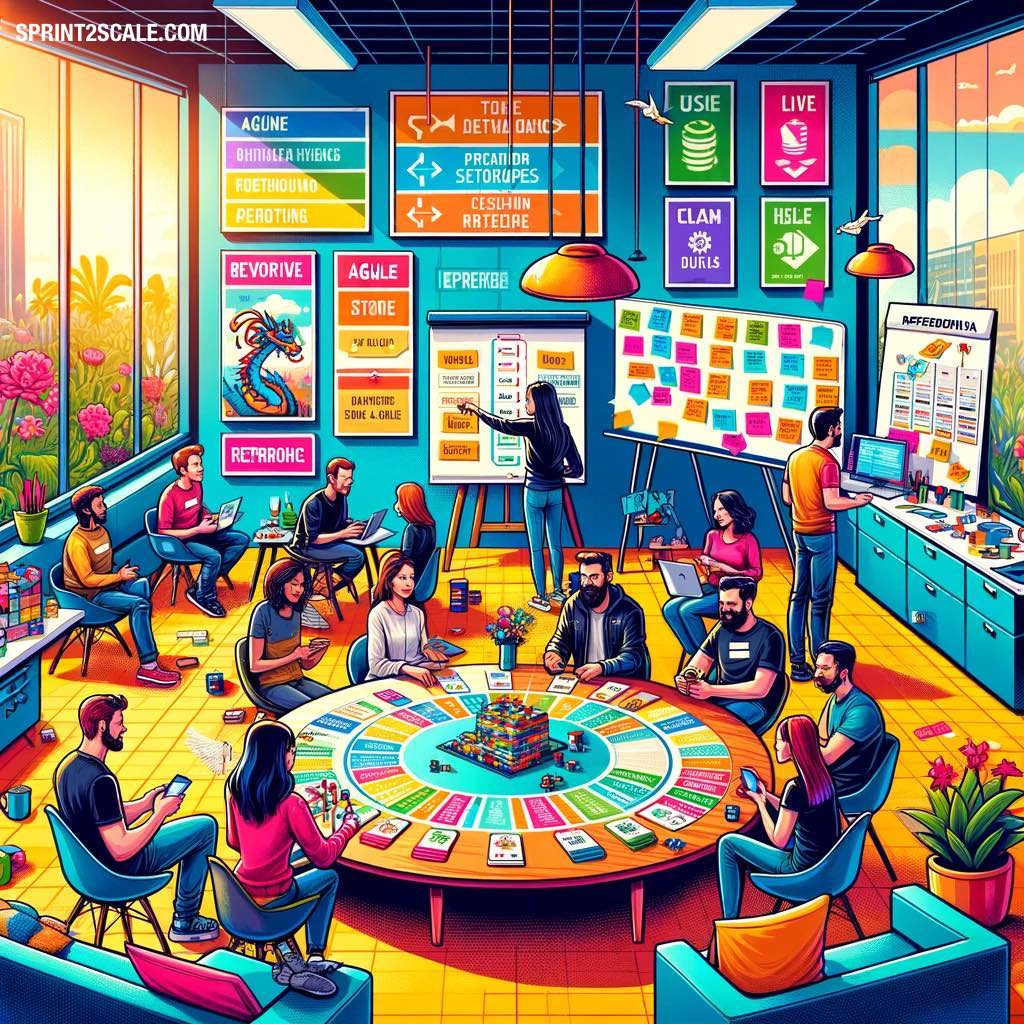
As we embark on this journey, it’s important to recognize that agile games are more than just recreational activities—they are powerful tools for learning and development. By incorporating play into the Agile framework, teams can tap into their natural creativity and resourcefulness, leading to more innovative solutions and stronger team cohesion.
In the following sections, we’ll explore each Agile game in detail, discussing its objectives, rules, and potential impact on team dynamics. Whether you’re a seasoned Agile practitioner or just starting out on your Agile journey, these games offer valuable opportunities for team building, learning, and growth. So let’s dive in and discover how these agile games can help your team reach new heights of collaboration and creativity.
Benefits of Agile Games
Agile methodologies have revolutionized the way teams approach project management, emphasizing flexibility, collaboration, and customer satisfaction. While Agile frameworks provide a structured approach to development, the incorporation of games and activities adds an element of fun and engagement to the process. In this section, we’ll explore the numerous benefits of integrating Agile games into team-building efforts:
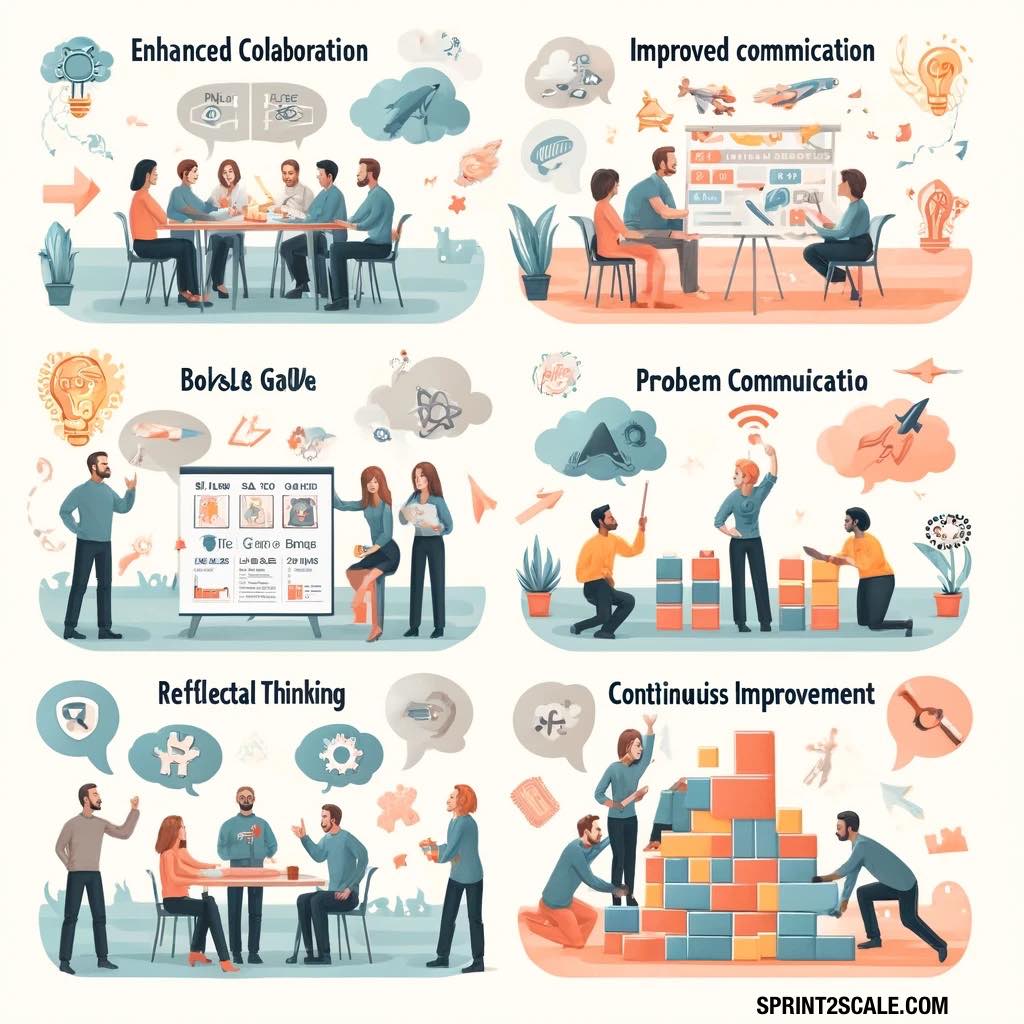
Promotes Collaboration |
|
Enhances Communication |
|
Sparks Creativity |
|
Builds Trust and Rapport |
|
Improves Problem-Solving Skills |
|
Encourages Continuous Improvement |
|
Overall, the benefits of Agile games extend beyond just team building—they contribute to a more collaborative, creative, and high-performing team culture. By incorporating these games into Agile practices, teams can unlock their full potential and achieve greater success in their projects.
Game 1: The Marshmallow Challenge
The Marshmallow Challenge is a classic team-building game that challenges participants to work together to build the tallest freestanding structure using spaghetti, tape, string, and a marshmallow. This game is not only fun and engaging but also offers valuable insights into teamwork, collaboration, and creative problem-solving.
Objective:
The objective of the Marshmallow Challenge is simple: build the tallest structure possible that can support the weight of a marshmallow placed on top. Teams must use the materials provided to construct their towers within a specified time limit, typically around 18 minutes.
Rules:
1. Each team is provided with a limited set of materials, including spaghetti noodles, tape, string, and a marshmallow.
2. Teams must work together to build a structure that can support the weight of the marshmallow using only the materials provided.
3. The structure must be freestanding, meaning it cannot be attached to any external supports such as tables or walls.
4. Teams have a fixed amount of time, usually around 18 minutes, to complete the challenge.
5. The winning team is the one that builds the tallest structure that can support the marshmallow without collapsing.
Benefits:
1. Encourages Collaboration: The Marshmallow Challenge requires teams to collaborate and communicate effectively to plan and execute their tower-building strategy.
2. Fosters Creative Thinking: Participants are encouraged to think creatively and experiment with different design ideas to build a stable structure using unconventional materials.
3. Develops Problem-Solving Skills: Teams must quickly identify and address challenges such as structural instability or material limitations, developing their problem-solving skills in the process.
4. Builds Trust and Rapport: By working together towards a common goal, team members build trust and rapport with one another, strengthening their relationships and improving team cohesion.
5. Provides Valuable Insights: Through the debriefing session following the challenge, teams can reflect on their performance, identify areas for improvement, and apply their learnings to future projects.
Overall, the Marshmallow Challenge is an excellent way to kick off team-building activities, providing a fun and interactive experience while promoting essential skills such as collaboration, creativity, and problem-solving.
Game 2: Paper Airplane Game
The Paper Airplane Game is a simple yet effective Agile activity that encourages teamwork, creativity, and iteration. Participants are tasked with designing and building paper airplanes with the goal of achieving the longest flight distance or the most accurate landing. This game not only provides an opportunity for team members to collaborate and compete but also offers insights into Agile principles such as iteration, experimentation, and adaptation.

Objective:
The objective of the Paper Airplane Game is to design and build paper airplanes that can achieve the longest flight distance or the most accurate landing. Teams must work together to create their airplanes within a specified time limit, typically around 30 minutes, using only paper and other basic materials.
Rules:
1. Each team is provided with a set of materials, including paper, scissors, and markers.
2. Teams must design and build paper airplanes that meet specific criteria, such as flight distance or accuracy.
3. Teams have a fixed amount of time, usually around 30 minutes, to design and build their airplanes.
4. After the allotted time, teams test their airplanes by flying them and measuring their flight distance or accuracy.
5. The winning team is the one that achieves the longest flight distance or the most accurate landing, as determined by the facilitator.
Benefits:
1. Promotes Collaboration: The Paper Airplane Game requires teams to collaborate and communicate effectively to design and build their airplanes, fostering teamwork and cooperation.
2. Encourages Creativity: Participants are encouraged to think creatively and experiment with different airplane designs and techniques to optimize performance.
3. Facilitates Iteration: Teams have the opportunity to iterate on their airplane designs based on feedback from test flights, promoting a culture of continuous improvement and adaptation.
4. Builds Problem-Solving Skills: Teams must quickly identify and address challenges such as aerodynamic issues or structural weaknesses, developing their problem-solving skills in the process.
5. Enhances Engagement: The interactive and hands-on nature of the Paper Airplane Game makes it highly engaging and enjoyable for participants, promoting active participation and enthusiasm.
Overall, the Paper Airplane Game is a fun and effective way to reinforce Agile principles while fostering teamwork, creativity, and problem-solving skills. By participating in this activity, teams can gain valuable insights into their working dynamics and strengths while having a great time together.
Game 3: Lego Serious Play
Lego Serious Play is a unique and innovative Agile game that leverages the power of play and creativity to unlock insights, solve problems, and enhance collaboration within teams. Developed by the LEGO Group, this facilitated workshop methodology enables participants to express their thoughts, ideas, and emotions through the use of Lego bricks, fostering deeper engagement and communication.
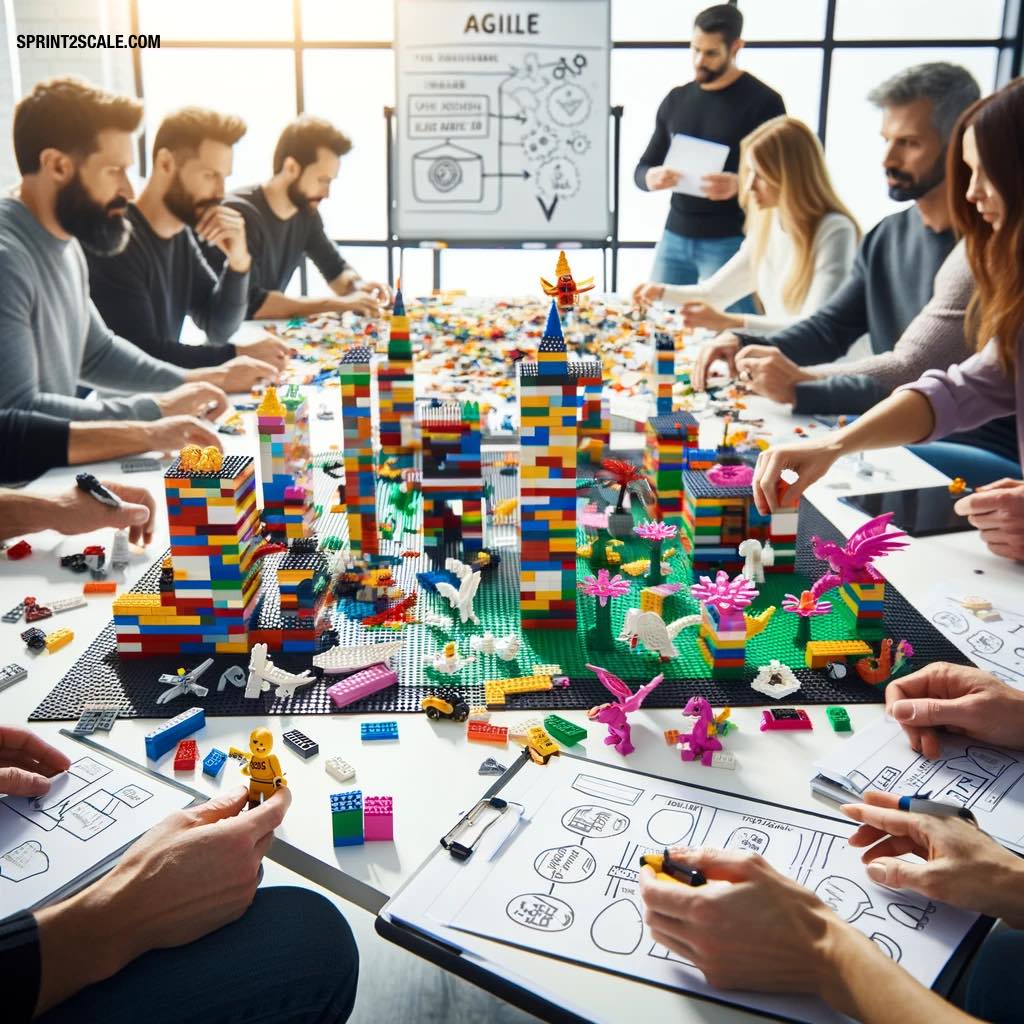
Objective:
The objective of Lego Serious Play is to facilitate meaningful discussions, problem-solving sessions, and decision-making processes within teams using Lego bricks as a medium. Participants are guided through a series of structured activities and prompts designed to explore specific topics, address challenges, or achieve predefined goals.
Process:
- Preparation: The facilitator prepares the Lego bricks and sets up the workshop space, ensuring that all necessary materials are readily available.
- Introduction: The facilitator introduces the objectives and agenda for the Lego Serious Play session, setting the stage for the activities to come.
- Building: Participants are given time to build Lego models in response to specific prompts or questions posed by the facilitator. They are encouraged to use their imagination and creativity to express their ideas and perspectives.
- Sharing: Participants share their Lego models with the group, explaining the significance and meaning behind their designs. This fosters open communication, active listening, and mutual understanding among team members.
- Reflection: The facilitator guides the group through a reflective discussion, allowing participants to explore connections between their Lego models, identify common themes or patterns, and draw insights from the collective experience.
- Action Planning: Based on the insights gained from the Lego Serious Play session, the group collaboratively develops action plans, strategies, or solutions to address identified challenges or achieve defined objectives.
Benefits:
- Encourages Active Participation: Lego Serious Play promotes active participation and engagement among team members, allowing everyone to contribute their ideas and perspectives in a non-threatening and inclusive environment.
- Stimulates Creativity and Innovation: By using Lego bricks as a creative medium, participants are encouraged to think outside the box, explore new possibilities, and generate innovative solutions to complex problems.
- Enhances Communication and Collaboration: The hands-on nature of Lego Serious Play facilitates communication and collaboration within teams, enabling clearer expression of ideas, active listening, and constructive dialogue.
- Unlocks Insights and Breaks Down Barriers: The tactile and visual nature of Lego Serious Play helps participants access deeper levels of insight, break down communication barriers, and foster empathy and understanding among team members.
- Facilitates Decision Making and Problem Solving: Lego Serious Play provides a structured framework for decision making and problem solving, enabling teams to explore multiple perspectives, weigh alternative options, and make informed choices collaboratively.
Overall, Lego Serious Play is a powerful tool for enhancing team collaboration, creativity, and problem-solving skills in Agile environments. By incorporating this game into Agile practices, teams can unlock their full potential, build stronger relationships, and achieve greater success in their projects.
Game 4: The Ball Point Game
The Ball Point Game is a dynamic Agile activity designed to illustrate key principles of Lean and Agile methodologies, such as flow, collaboration, and continuous improvement. Developed by Boris Gloger, this game challenges teams to work together to optimize their workflow and achieve maximum efficiency in delivering a simple task.
Objective:
The objective of The Ball Point Game is to pass as many balls as possible through a predefined series of handoffs within a fixed time frame, typically around 5 minutes. Teams must collaborate to identify and eliminate bottlenecks, streamline their process, and increase their throughput.
Process:
1. Setup: The facilitator explains the rules and objectives of The Ball Point Game to the participants, ensuring everyone understands the task at hand.
2. Ball Passing: Participants form a circle and pass balls from one person to the next according to a predefined sequence of handoffs. Each handoff represents a step in the workflow, such as processing, inspection, or delivery.
3. Timing: The facilitator starts the timer and instructs the participants to begin passing balls through the workflow. Teams have a fixed amount of time, typically around 5 minutes, to complete as many passes as possible.
4. Iteration: After the first round, the facilitator pauses the game and allows teams to reflect on their performance. Teams discuss their observations, identify bottlenecks or inefficiencies in their process, and brainstorm potential improvements.
5. Continuous Improvement: Teams implement changes to their process based on their observations and insights from the previous round. The facilitator restarts the game, and teams continue to iterate and refine their approach to maximize their throughput.
6. Debrief: At the end of the game, the facilitator leads a debriefing session to discuss the outcomes, lessons learned, and implications for real-world Agile practices. Teams reflect on their experiences, identify actionable takeaways, and discuss how they can apply their learnings to improve their Agile processes.
Benefits:
1. Illustrates Agile Principles: The Ball Point Game provides a tangible and interactive way to illustrate key Agile principles, such as flow, collaboration, and continuous improvement, in a real-world context.
2. Fosters Collaboration: Participants must collaborate closely to pass balls through the workflow efficiently, promoting teamwork, communication, and shared responsibility.
3. Encourages Experimentation: The iterative nature of The Ball Point Game encourages teams to experiment with different approaches and strategies to optimize their process and increase their throughput.
4. Promotes Continuous Improvement: By reflecting on their performance and making iterative changes to their process, teams develop a culture of continuous improvement and learning.
5. Engages Participants: The dynamic and competitive nature of The Ball Point Game keeps participants engaged and motivated, making it an effective tool for introducing Agile concepts and practices in a fun and interactive way.
Overall, The Ball Point Game is a valuable Agile activity for illustrating key principles and fostering collaboration, experimentation, and continuous improvement within teams. By participating in this game, teams gain practical experience and insights that can be applied to enhance their Agile practices and drive better outcomes in their projects.
Game 5: Speed Boat
Speed Boat is an Agile retrospective activity that helps teams identify and address obstacles, or “anchors,” that are hindering their progress and preventing them from reaching their goals. Inspired by the Sailboat Retrospective, this game provides a creative and interactive way for teams to reflect on their experiences, prioritize areas for improvement, and develop action plans for moving forward.
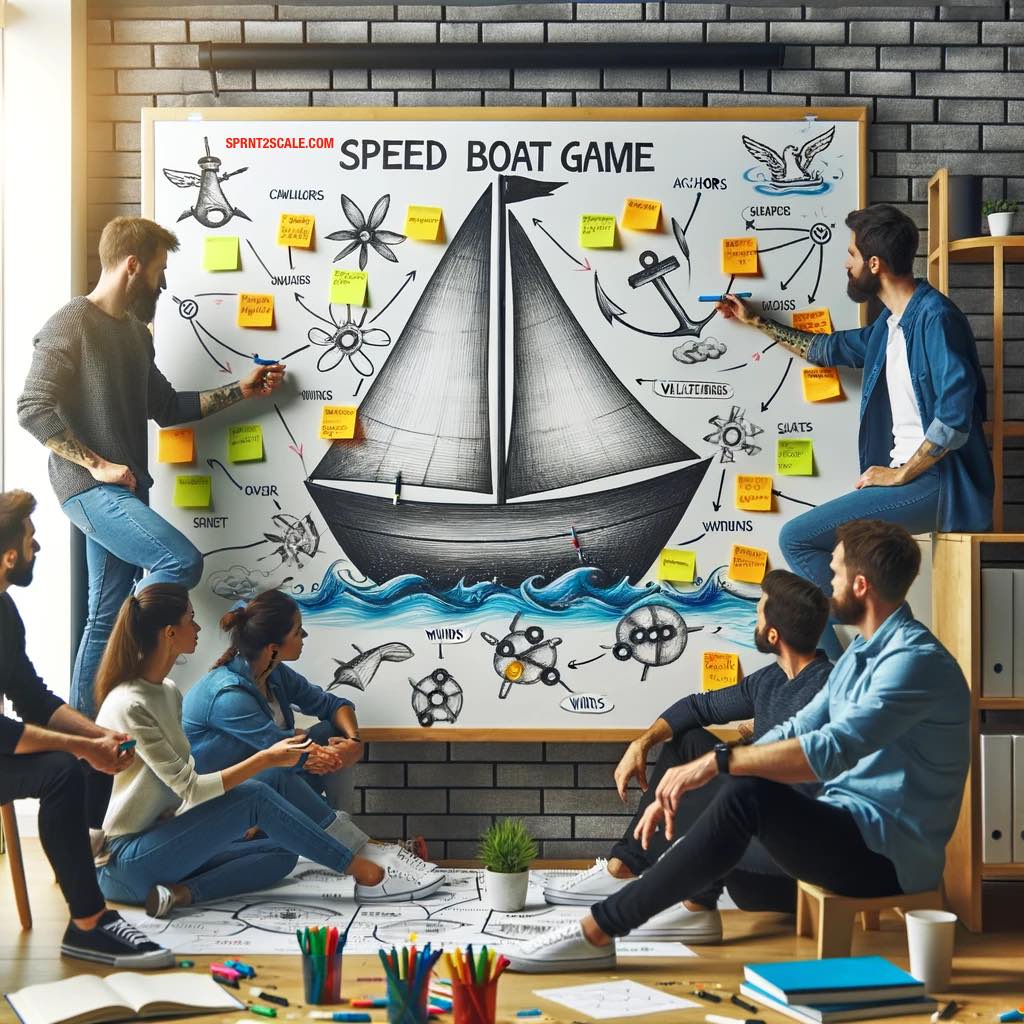
Objective:
The objective of the Speed Boat game is to identify obstacles, or “anchors,” that are slowing down or impeding the team’s progress. Participants collaborate to brainstorm and prioritize these anchors, then develop action plans to address them and improve their future performance.
Process:
- Setup: The facilitator introduces the Speed Boat game to the participants and explains the rules and objectives. Each participant is given a marker and a set of sticky notes.
- Anchors: Participants are asked to think about obstacles or challenges that have been slowing down or hindering the team’s progress. They write each obstacle on a sticky note and place it on the “boat,” which represents the team’s journey.
- Prioritization: Once all the anchors have been identified, participants vote on which ones they believe are the most critical or impactful. They use their markers to mark their votes on the sticky notes.
- Action Plans: After prioritizing the anchors, participants discuss potential solutions or actions that could address each obstacle. They collaboratively develop action plans and strategies for overcoming these challenges.
- Reflection: The facilitator leads a reflective discussion, allowing participants to share their thoughts and insights on the speed boat exercise. They discuss the challenges they face, the action plans they have developed, and how they can support each other in implementing these solutions.
- Commitment: Finally, participants commit to taking specific actions to address the identified obstacles and improve their future performance. They set deadlines and assign responsibilities for each action item to ensure accountability and follow-through.
Benefits:
- Promotes Open Communication: Speed Boat encourages open and honest communication among team members, allowing everyone to share their perspectives and experiences without fear of judgment.
- Identifies Obstacles: The game helps teams identify and prioritize obstacles that are hindering their progress, providing clarity on areas for improvement and focus.
- Fosters Collaboration: Participants collaborate to develop action plans and strategies for addressing the identified obstacles, promoting teamwork and shared ownership.
- Encourages Reflection: Speed Boat facilitates reflection on past experiences and challenges, enabling teams to learn from their mistakes and identify opportunities for growth.
- Drives Continuous Improvement: By developing action plans and committing to specific actions, teams establish a culture of continuous improvement and accountability, driving better outcomes in the future.
Overall, Speed Boat is a valuable Agile retrospective activity for identifying obstacles, fostering collaboration, and driving continuous improvement within teams. By participating in this game, teams can gain valuable insights into their challenges and opportunities, develop actionable solutions, and strengthen their ability to overcome obstacles and achieve their goals.
Game 6: Scrum Lego City
Scrum Lego City is an engaging and interactive Agile simulation game that simulates the Scrum framework and its components using Lego bricks. Developed by Alexey Krivitsky, this game provides teams with a hands-on experience of working in an Agile environment, allowing them to practice Scrum principles and practices in a fun and immersive way.
Objective:
The objective of Scrum Lego City is to simulate the Scrum framework and its key components, such as sprints, backlog refinement, sprint planning, and sprint review, using Lego bricks. Participants work together to build and deliver a Lego city according to predefined user stories and acceptance criteria.
Process:
1. Setup: The facilitator introduces the Scrum Lego City game to the participants and explains the rules and objectives. Each participant is assigned a role, such as product owner, Scrum master, or development team member.
2. Backlog Refinement: The product owner presents the backlog of user stories, each representing a feature or requirement for the Lego city. The team collaborates to refine the backlog, clarify requirements, and estimate the effort required for each user story.
3. Sprint Planning: The team selects a subset of user stories from the backlog to include in the upcoming sprint. They discuss the priority of each user story, break them down into tasks, and estimate the effort required to complete them.
4. Sprint Execution: The team works collaboratively to build and deliver the selected user stories within the sprint timebox, typically around 15–30 minutes. They use Lego bricks to construct the Lego city according to the acceptance criteria defined for each user story.
5. Daily Standup: The team holds daily standup meetings to discuss progress, share updates, and identify any obstacles or challenges they are facing. They use this opportunity to re-plan and adjust their approach as needed to stay on track.
6. Sprint Review: At the end of the sprint, the team presents their completed user stories to the product owner and stakeholders, demonstrating how they meet the acceptance criteria. Feedback is provided, and any necessary adjustments are made.
7. Retrospective: The team reflects on their sprint performance, discussing what went well, what could be improved, and how they can apply their learnings to future sprints. Action items are identified, and plans are made for continuous improvement.
Benefits:
1. Hands-on Experience: Scrum Lego City provides participants with a hands-on experience of working in an Agile environment, allowing them to practice Scrum principles and practices in a realistic setting.
2. Team Collaboration: The game promotes collaboration and communication within teams as they work together to plan, execute, and review their sprints.
3. Visual Representation: The use of Lego bricks as a visual representation of user stories and tasks makes it easier for participants to understand and engage with the Scrum framework.
4. Learning Opportunity: Scrum Lego City offers a valuable learning opportunity for participants to understand the roles, events, and artifacts of Scrum and how they contribute to successful project delivery.
5. Fun and Engaging: The interactive and immersive nature of the game makes it fun and engaging for participants, keeping them motivated and focused throughout the simulation.
Overall, Scrum Lego City is an effective Agile simulation game for teams to practice Scrum principles and practices in a hands-on and interactive way. By participating in this game, teams can gain valuable insights into the Scrum framework, improve their collaboration and communication skills, and enhance their ability to deliver high-quality products and solutions.
Making the Most of Available Technology
In the fast-paced world of agile development, leveraging the right tools and technologies can significantly enhance productivity, collaboration, and project outcomes. This section explores some of the key technologies and tools that teams can utilize to streamline their agile practices and maximize their effectiveness.
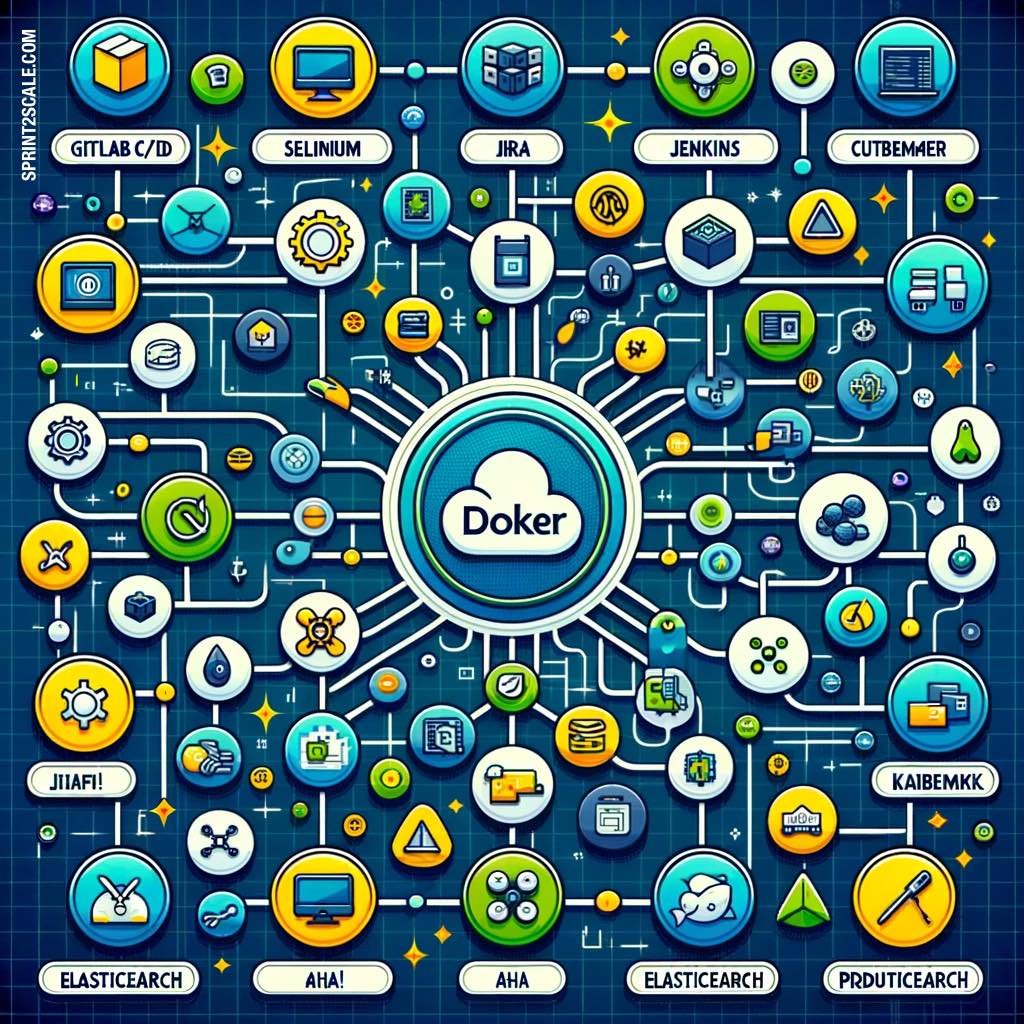
1. Docker and Kubernetes:
- Containerization and orchestration technologies like Docker and Kubernetes are foundational to modern Agile development practices.
- Docker enables teams to package applications and their dependencies into lightweight containers, providing consistency and portability across different environments.
- Kubernetes automates the deployment, scaling, and management of containerized applications, allowing teams to deploy and manage applications with ease.
2. GitLab CI/CD:
- GitLab CI/CD provides a unified platform for the full DevOps lifecycle, including continuous integration (CI) and continuous deployment (CD).
- Teams can use GitLab CI/CD to automate the build, test, and deployment processes, ensuring that code changes are tested and deployed quickly and reliably.
- GitLab CI/CD integrates seamlessly with GitLab repositories, enabling teams to manage their source code, CI/CD pipelines, and collaboration on a single platform.
3. JIRA and Trello:
- JIRA and Trello are popular project management tools that teams can use to plan, track, and manage Agile projects.
- JIRA offers customizable Scrum boards and backlog management features, making it ideal for teams practicing Scrum or other Agile frameworks.
- Trello provides visual Kanban boards and task management capabilities, allowing teams to organize and prioritize their work in a flexible and intuitive way.
4. Jenkins:
- Jenkins is an open-source automation server that enables teams to automate the build, test, and deployment processes of their software projects.
- With Jenkins, teams can create custom CI/CD pipelines to automate repetitive tasks, improve efficiency, and ensure consistency in their development workflows.
- Jenkins supports a wide range of plugins and integrations, making it highly customizable and adaptable to different project requirements
5. Selenium and Cucumber:
- Selenium and Cucumber are popular testing frameworks used for automated testing of web applications.
- Selenium enables teams to automate browser-based tests, ensuring that web applications function correctly across different browsers and platforms.
- Cucumber supports behavior-driven development (BDD) by allowing teams to write test cases in plain English, making it easier to collaborate and understand the purpose of each test.
6. Apache Kafka and RabbitMQ:
- Apache Kafka and RabbitMQ are messaging systems that enable teams to effectively manage data streaming and message queuing in distributed systems.
- Apache Kafka provides a high-throughput, fault-tolerant platform for handling real-time data streams, making it ideal for use cases such as event sourcing, log aggregation, and stream processing.
- RabbitMQ is a robust message broker that supports multiple messaging protocols and patterns, allowing teams to decouple and scale their applications more effectively.
7. Elasticsearch and Kibana:
- Elasticsearch and Kibana are powerful tools for log management, monitoring, and analytics, providing teams with real-time insights into their applications and infrastructure.
- Elasticsearch is a distributed search and analytics engine that enables teams to index, search, and analyze large volumes of structured and unstructured data with ease.
- Kibana is a visualization platform that allows teams to create interactive dashboards and visualizations based on data stored in Elasticsearch, enabling them to gain actionable insights and make data-driven decisions.
8. Aha!, ProductPlan, and Roadmunk:
- Aha!, ProductPlan, and Roadmunk are product management tools that help teams plan, prioritize, and communicate their product roadmaps effectively.
- Aha! offers robust roadmapping features and integrations with popular Agile tools, allowing teams to align their product strategy with their development efforts and track progress towards strategic goals.
- ProductPlan provides intuitive roadmapping capabilities and collaboration features, enabling teams to create and share visual roadmaps with stakeholders and team members.
Roadmunk offers customizable roadmap templates and timeline views, making it easy for teams to visualize and communicate their product plans and milestones.
By leveraging these technologies and tools, teams can streamline their Agile practices, improve collaboration and communication, and deliver high-quality products and solutions more efficiently. Whether it’s automating development workflows, managing project tasks, or ensuring the quality of software through automated testing, the right tools can make all the difference in achieving Agile success.
Good Articles to Read
Know The Agility’s Five Biggest Obstacles
Unraveling the Complex Tapestry: Understanding the Pitfalls of Agile Scaling Transformations
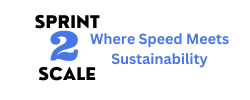
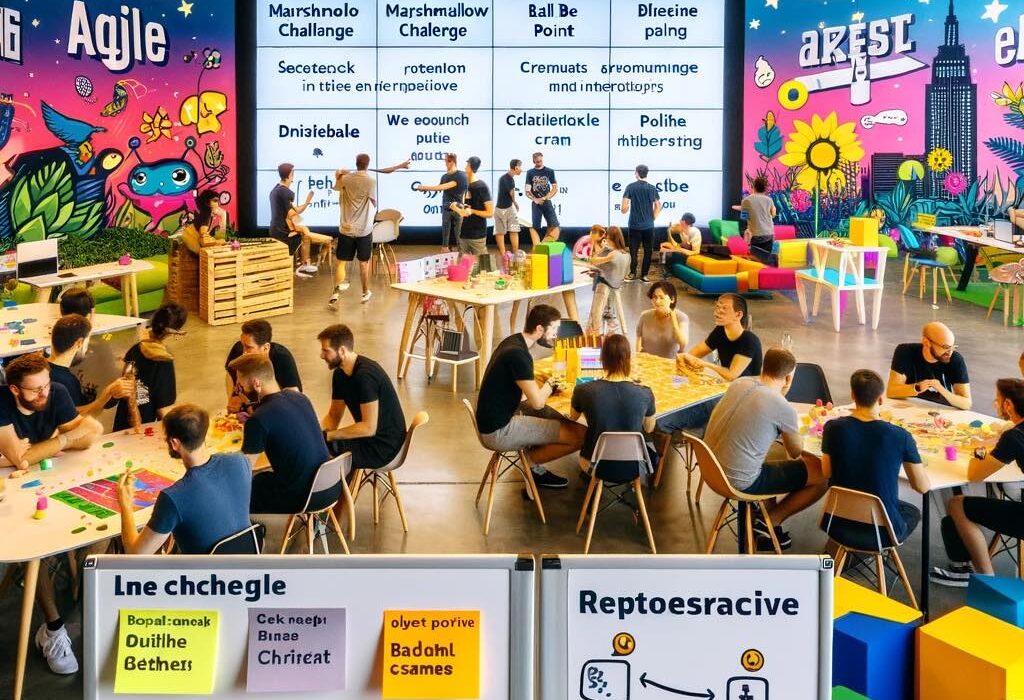


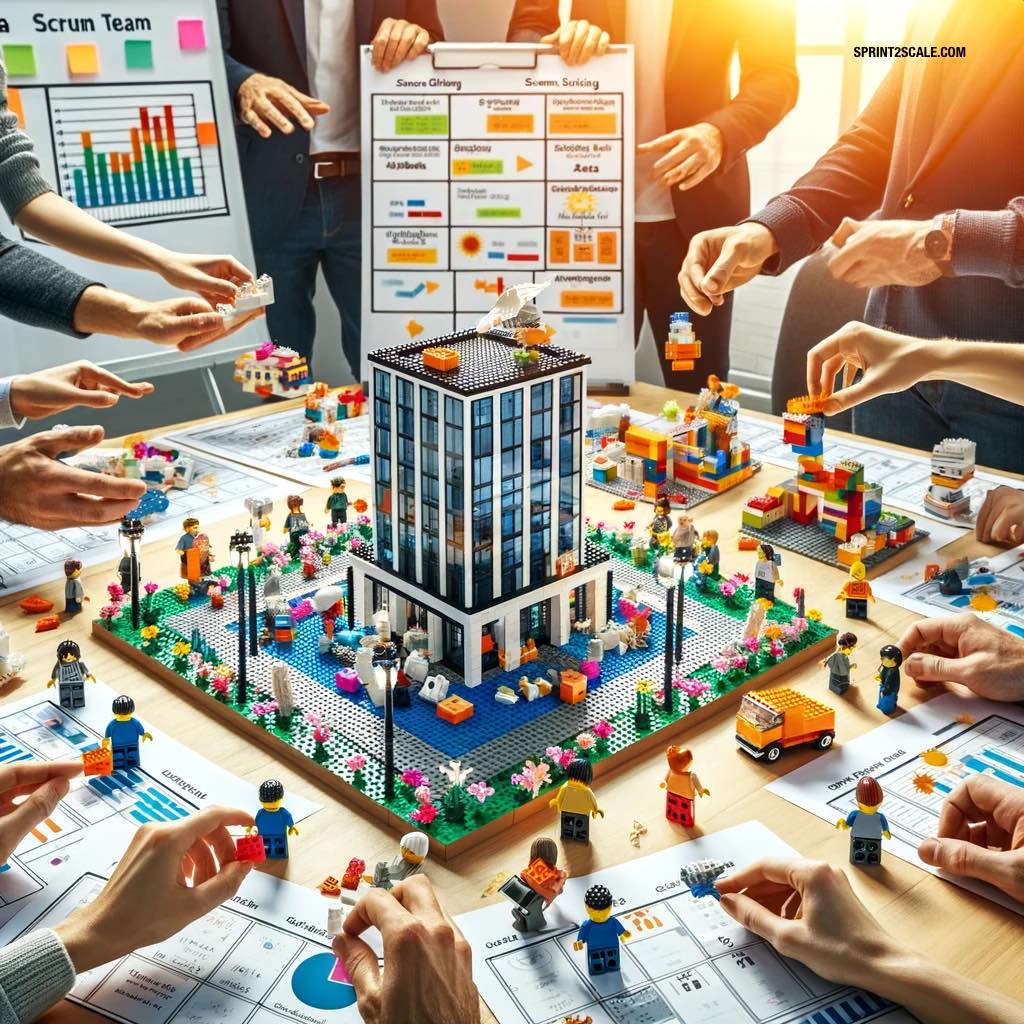


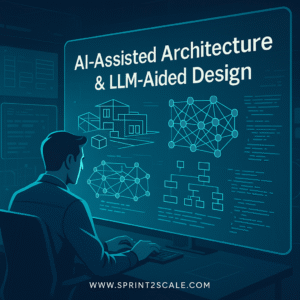
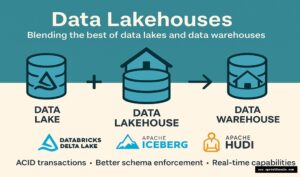
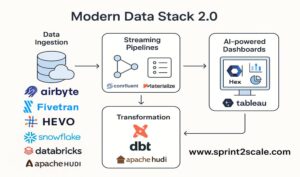
No Comment! Be the first one.